Looking for Italian shows on Netflix?
Finding content in Italian used to be hard. But with the invention of the internet, and more importantly – Netflix, this process has become easier than ever.
That being said – binging Casa de Papel won’t suddenly make you fluent in Spanish.
But that doesn’t mean you can’t apply a little strategy to make your binge-sessions a little more productive.
Let me be clear – I don’t think you can learn Italian from just watching Netflix, but I think one of the most important things people who study a new language forget is that for you to become fluent, you need more than just ‘study knowledge’.
You need to find a way to apply and practice that knowledge, you need to do that semi-consistently, and in order to do that, it needs to be fun.
Watching something on Netflix easily ticks all of those boxes, which is why Netflix is one of my favorite strategies to learn a foreign language.
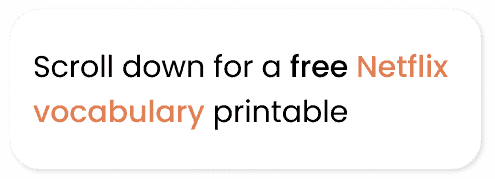
How I became fluent in English
When I was a teenager, I was obligated to take English in high school.
But like for many people my generation, the real learning process started after school.
I would go home while listening to English music on the radio, watching American shows on tv.
Watching English content made me develop a feeling for the language, and it was a great way to see the grammar and vocabulary I had to learn in class applied in real life.
Of course, if I hadn’t learned English in school I wouldn’t have been able to understand anything they said.
But my knowledge of the English language around that time was pretty basic, and yet I was able to understand quite a lot, and while watching I developed a better sense of the language than if I had only taken classes.
More importantly, because learning English had a practical goal, it made the lessons I was taking a lot more fun.
Now when people ask me how I learned English, the official answer should be that I had to learn it in school. But the real reason I learned English is that I was addicted to Desperate Housewives, and I secretly binged all seasons online.
And because Netflix was still a service that would send you DVDs to your house (yes, did that, and still do), to watch the latest seasons I had to go to sketchy websites and watch them without subtitles.

For 14 year old me, this was quite the challenge, and while I didn’t understand everything, I certainly noticed my English was improving a lot.
Suddenly, listening tests were super easy, and I hardly had to study for exams.
While taking tests, I would often think back to the shows I watched and imagine the characters say something, and I would intuitively be able to say whether it sounded ‘right’ or not.
It forced me to apply my knowledge and learn through practice, without me even noticing.
Now, I use English daily (almost more than my native language), and though most people in the Netherlands speak English to a certain degree, I know that I am much more comfortable using it than most other Dutch people.
I am 100% confident that without those secret binge sessions, my English wouldn’t be where it is now.
How can you improve or learn Italian on Netflix?
While learning a language through Netflix sounds pretty ideal, there are strategies that will help you, and strategies that won’t. Here are some of my favorite strategies, and when/why you should use them.
Let’s assume you speak English, and you want to learn Italian.
If you are not fully fluent in English, you can replace English with your native language and apply the same technique to Italian. English is just used as an example to better explain the following strategies.
1. English content with Italian subtitles
Level – Beginner/Intermediate
Why – Because you already understand English, so there is no need for subtitles. By adding them in Italian, you are getting exposed to the language while listening to a language you already know.
I find this incredibly helpful in the beginning. If you already know a few words, you can quickly pick them out and figure out more words through context.
Don’t be afraid to pause every once in a while, study a sentence, look up words you are unsure about.
You can also write down sentences you think might be helpful. For example, if people use certain expressions and they are translated to your target language.
The best part about this is that even when it’s hard to find content in Italian, you can apply this strategy to constantly improve your skills or be exposed to Italian.
2. Italian content with English subtitles
Level – Beginner
Why – To get used to the sounds of Italian while still understanding what’s going on.
I think language exposure is a very underrated tool to help you become fluent in a new language. You don’t have to understand everything, but it helps you develop a feeling for intonation, pronunciation, and rhythm.
When I was younger I spent the same amount of hours a week studying German, French, and English. Only one of those stuck, and it’s because I had had so much exposure. English was everywhere, even when I was small. I couldn’t understand a thing, but when I did start learning it, it felt a lot more familiar than for example French, a language I would mostly hear in class during a listening exercise.
That being said, I would only recommend this if you are too much of a beginner to add subtitles in Italian. If you are still not at a point where you can read subtitles that are 100% in Italian, consider doing both.

3. Italian content with Italian subtitles
Level – Intermediate (Advanced)
Why – To connect speech to what is written
Hearing Italian while also seeing it written on-screen really helps to connect speech to written words. I personally also feel it helps me remember things better, as I am not just hearing or reading it, but doing both at the same time.
This might be one of my favorite things, and it’s a strategy I still apply daily.
I am currently a C1 speaker of English, and I still find new words, new expressions. Better yet – when I was younger I used to watch things without subtitles. Great for my pronunciation, not so great for my spelling.
I learned loads of new words, but I had no idea how to spell them, and we all know English spelling is notoriously unreliable. When I started watching content in English I found myself constantly seeing words I was already using, that were spelled completely different than what I had imagined.
Plus, and this might be a bit of a personal thing, but I find that the more I speak the more phonetic my spelling gets. While I am perfectly aware of the difference between “you’re” and “your”, after a week of mostly speaking English without writing or reading it, I am much more likely to misspell it or to overlook the mistake.
By keeping subtitles on English, even when I am not actively studying it anymore, I find that I keep up my reading brain and am a better speller when it is time to write something.
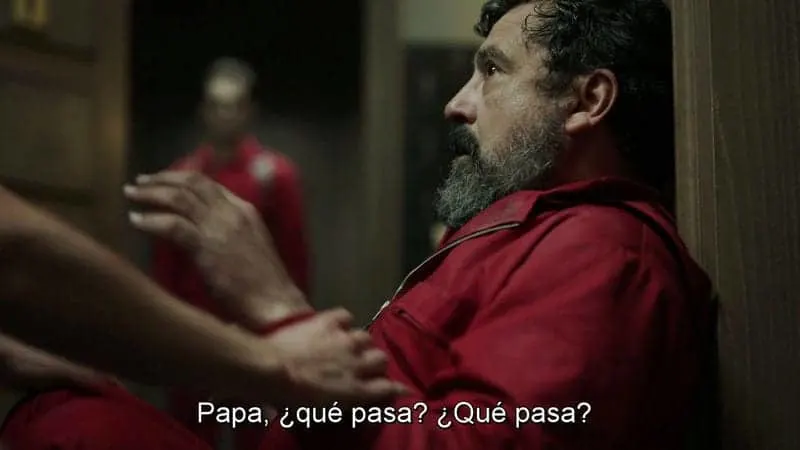
4. Italian without subtitles
Level – Intermediate / Advanced
Why – To practice your listening skills.
If you are interested in practicing your listening skills, this is an amazing way to do so.
It might also benefit your pronunciation, as you are not focusing on how things are written, but purely on how it is pronounced. This means that if native speakers skip letters or are pronouncing certain letters differently than usual, you won’t be distracted by the spelling.
Why are “thought”, “though”, and “tough” all spelled nearly the same but pronounced differently? It doesn’t matter if you are only focussing on how they sound, and it’ll be easier to distinguish them in the future.
That being said, as I’ve mentioned before, I think adding subtitles, in general, is a great tool to focus on both listening and reading, and I still use it as a tool to stay on top of my spelling.
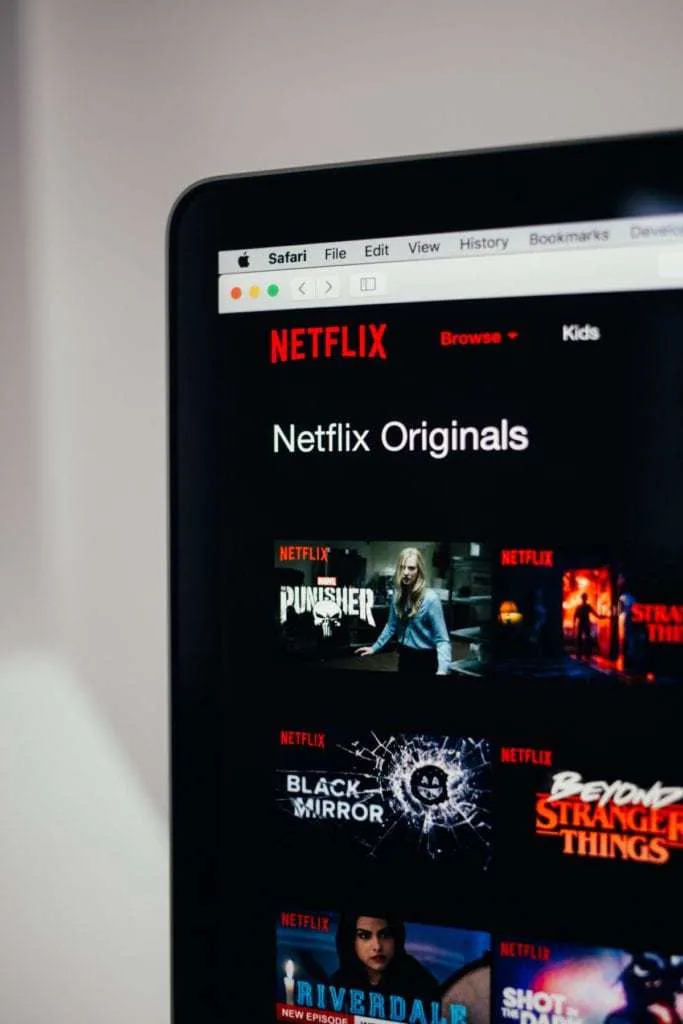
5. Prewatch and rewatch
Level – Beginner/Intermediate/Advanced
Why – To know what is going on while watching something in Italian
One of the biggest risks of watching something in Italian is that you might not be able to understand everything, and therefore you might not follow the plot, or miss something important.
That, however, isn’t an issue when you already know what is going to happen.
When learning Italian, try rewatching classic movies or even rereading books. Because if you already know what is happening, it is much easier to fill in gaps and words you don’t understand.
Ideal for this type of rewatching, in my opinion, is things along the lines of Pinnochio and animated movies.
I myself am not a big fan of dubbed movies, which is why I generally prefer animated movies.
That being said, if there is a particular movie that is a classic in Italian, you could simply watch it twice – once with subtitles in English, and once either without subtitles or with subtitles in Italian.
This way you know what is going on, so you won’t miss important clues, but you can still practice your language skills.

Here are 7 Italian Shows You Can Watch on Netflix in 2022
1. Carlo & Malik
IMDB Score: 7.2
Genre: Crime, Drama
“A veteran police officer from Rome, Inspector Carlo Guerrieri, finds himself partnered with a rookie-born in Ivory Coast, which forced him to face his own biases.”
2. Suburra: Blood on Rome
IMDB Score: 8.0
Genre: Action, Crime
“In 2008, a fight over development land turned into a dangerous battle between corrupt politicians, organized crimes, gangsters and the Vatican. A movie based on a real-life political scandal.”
3. Baby
IMDB Score: 6.9
Genre: Drama
“Story of two Roman teenagers, from different social worlds, who found their journey to self-discovery.”
4. Ultimate Beastmaster Italy
IMDB Score: 7.3
Genre: Game-Show, Reality-TV
“Ultimate Beastmaster” is the first international competition show of its kind. It will feature six country-specific versions that come with local languages, competitors and hosts from the United States, Brazil, South Korea, Mexico, Germany, and Japan. The series will showcase 108 competitors, 18 from each country, with each hour-long episode featuring 12 contestants – two from each country. All 10 episodes will launch at the same time worldwide only on Netflix. The athletes will run an obstacle course known as “The Beast,” and each episode will win as a “Beastmaster.” In the end, the nine individual winners each show will compete against each other in the final episode of the season to become the “Ultimate Beastmaster.”
5. First Team: Juventus
IMDB Score: 7.6
Genre: Reality-TV, Sport
“A docuseries following renowned soccer club, Juventus on and off the court as they attempt to win a seventh straight Italian title and win the Champions League glory.”
6. Una Mamma Imperfetta
IMDB Score: 7.6
Genre: Comedy
“Una mamma imperfetta è una serie televisiva e webserie scritta da Ivan Cotroneo e diretta da Stefano Chiantini, prodotta in due stagioni da RCS, Indigo Film, Rai Fiction e la 21 dello stesso Cotroneo.”
7. Il Processo
IMDB Score: 6.9
Genre: Crime
“A group of characters is implicated in the murder of Angelica. They all walk on a razor’s edge searching for the truth, waiting for a verdict, which will establish, in a way or another, a new course for their lives.”
How do I learn Italian on Netflix?
So, you’ve decided what strategy will help you learn Italian on Netflix.
But how exactly do you find Italian content on Netflix?
There are various ways to go about it.
-
Original content
Let’s face it, nothing beats a movie in its original language. I have met Germans who dared to say that sometimes the German voice-over was better than the original and that you ‘really don’t see’ that the mouths move in a completely different way than they should, but they are either lying or delusional.
When learning a language try to find as much original content as you can find. Luckily, there is an easy way to do so on Netflix.
When going to the little search box in the corner, simply search for ‘*blank* language’.

For example, ‘German language’, or ‘Arabic language’.
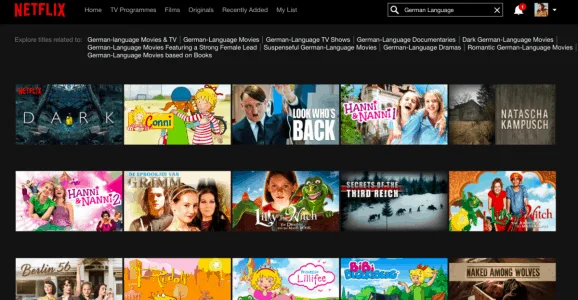
This will give you an overview of all the content available in that language.
Not only that, Netflix lets you specify what kind of content you want. You could look specifically for “German-language documentary” or “Portuguese language action movie”.
Note: you really need to specify the language part. When simply looking up “Italian movies”, Netflix might also be looking at production which means they could also be offering some movies that are made by Italians but not necessarily in Italian.
Some languages might have more options than others, but this is the fastest way of finding out what original language content Netflix has to offer.
2. Audio in …
If you have already gone through all of the original language stuff, you might be tempted to simply change the audio in original English content. I am personally not a big fan of material with voice overs, but some people swear by it. The nice thing about this option is that it expands your possible pool of movies and series greatly.
Most original Netflix content offers audio and subtitles in different languages, but if you want to simplify the process, even more, you can simply search for “Audio in … ” and let Netflix do the rest.

This will load all of the titles that are available with different audio than the original. Generally, these are Netflix originals that are shared worldwide and therefore have different audio sets available, which they have all conveniently uploaded for us language learners (Thank you Netflix! We see you!)
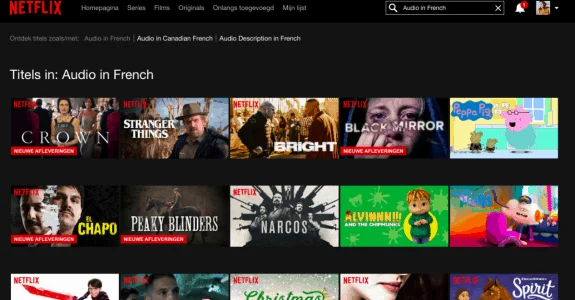
Once you have selected a show you can change the audio to Italian. You can then always change the subtitles to English, to make sure you understand everything, or you can leave the audio in English and only change the subtitles to Italian (which is also greatly beneficial to your language learning process).
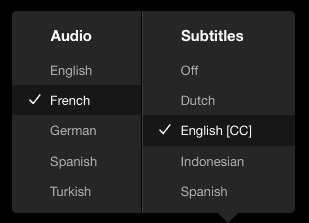
3. Subtitles in
Similarly to the search shown above, you can also search for “Subtitles in … ” and be presented with the subtitles that are available in different languages.

Please note that even though the search may be the same, the results may differ a lot, mostly in the sense that there will be many more options when it comes to the availability of subtitles in foreign languages.
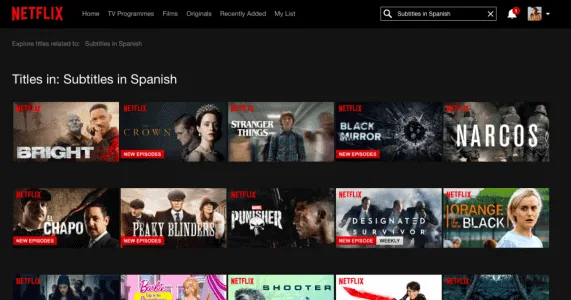
When selecting your new show you simply change the language of subtitles, and voila.
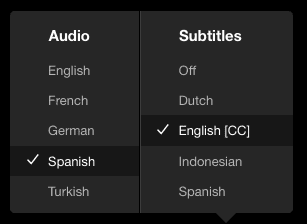
This is actually one of my favorite language learning strategies. As mentioned before, I am not a big fan of voice-overs, so I always watch movies in their original language. A lot of the things I watch are in English, which is a language I already understand, so I change the subtitles to a language I am still learning
4. Change the language to Italian
If you still haven’t found Italian because it’s unavailable, or it simply doesn’t show up among the options, you can also try by changing the language of your Netflix profile.
You can go to the top right-hand corner and select the option “MANAGE PROFILES”

From there, you simply select your own profile and change the language.
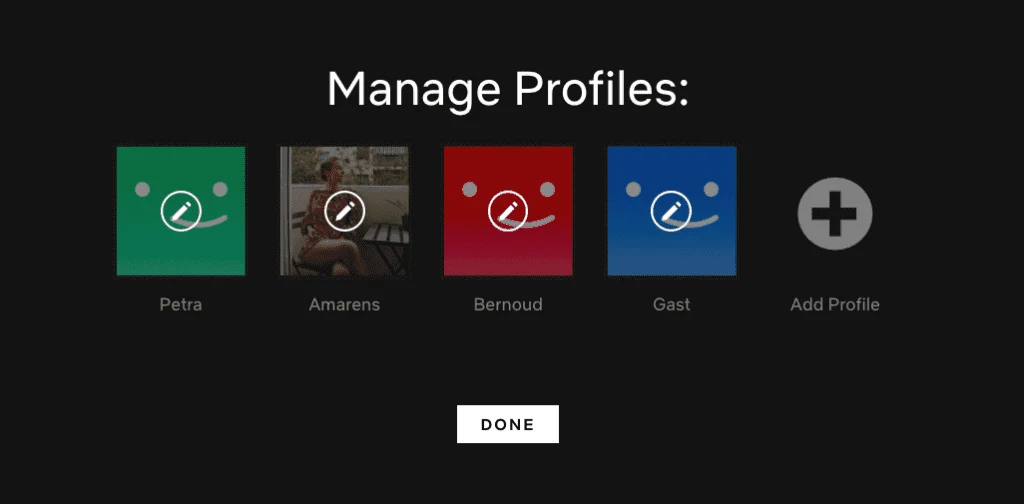
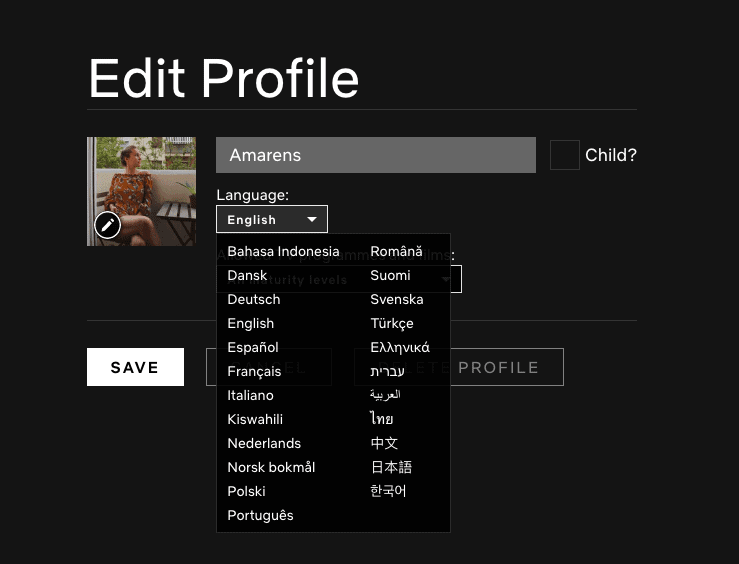
Under languages, you should be able to select Italian, provided it is one of the available options.
Click “SAVE” and refresh your page if necessary.
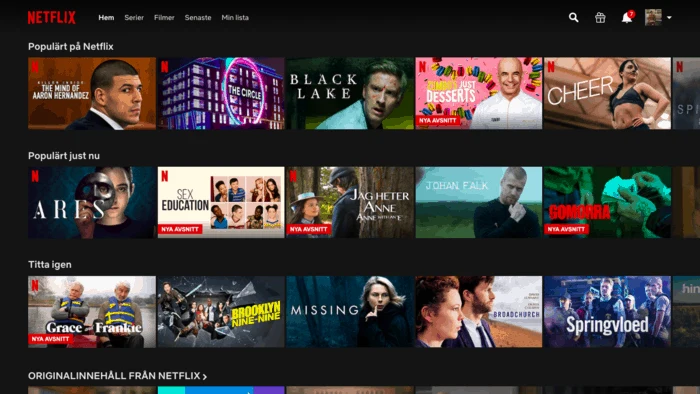
From now on, the menus, options and maybe even titles of series will be in Italian.
If all is well, subtitles should still be available in your native language, or the language your account was created in, but it should also have the additional option of Italian.
It doesn’t work for all shows. If the show you are interested in watching isn’t available in Italian, you might find these subtitles don’t even exist, so it won’t show them.
For most shows that are available in multiple languages, and especially Netflix originals, you will have the new option of adding subtitles in Italian.
Best Chrome extensions for learning Italian on Netflix
One of the best things about the language learning community is that there are so many people with the skills to create something that will help them to learn a new language.
Here are my favorite Chrome applications that can help you learn Italian on Netflix.
1. Language Learning with Netflix (LLN)
“LLN (Language Learning with Netflix) is a Chrome extension that gives you superpowers over Netflix. It makes studying Italian with films/series more effective and enjoyable.”
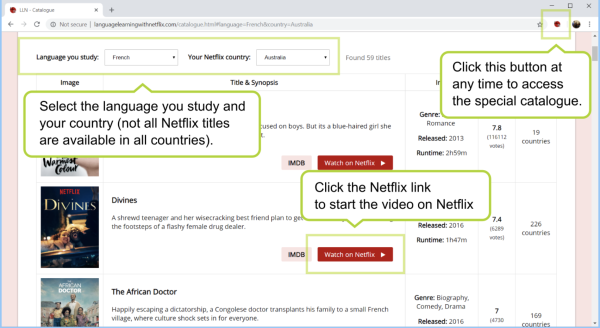
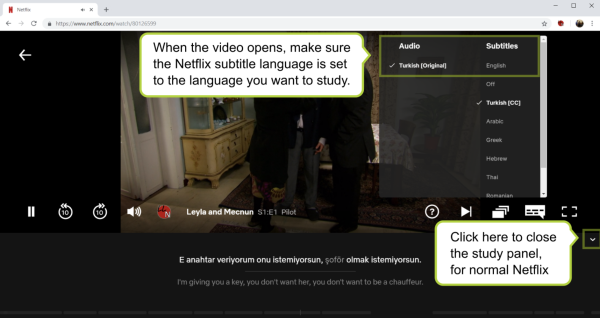
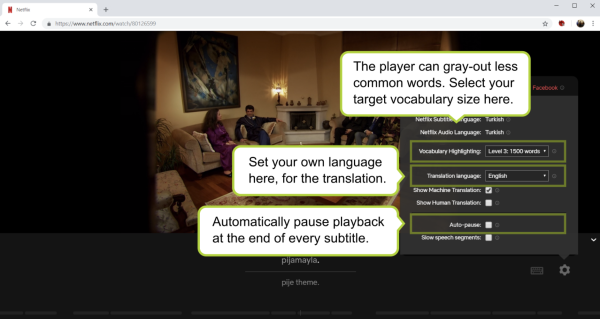
There are two types of translation you can pick from.
- Machine translation – gives you a word by word translation, and can help you understand structure and words
- Human translation – gives you an actual translation and can help you with idioms and phrases
Both serve their purpose, and I highly recommend to simply try out both in order to find out which one is the better fit for you.
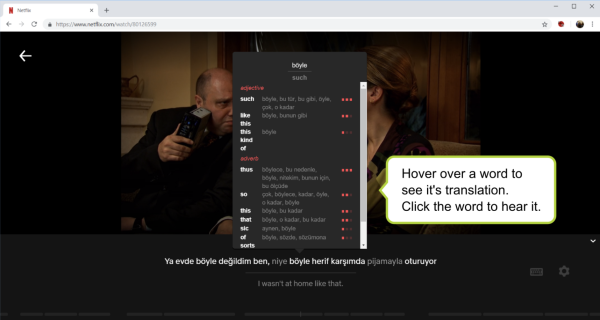
-
‘a’ for the previous subtitle
-
‘s’ to repeat a subtitle
-
‘d’ to for the next subtitle
-
‘space bar’ to play/pause playback
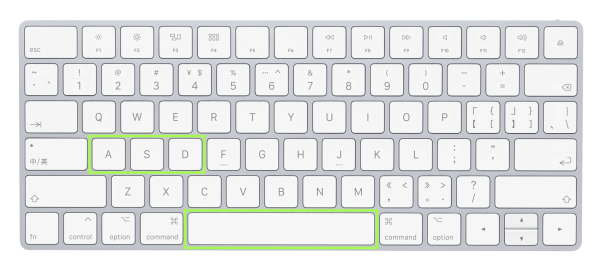
There are a couple of things I really enjoy about this extension. The first thing is that it has double subtitles. This allows you to compare phrases between your target language and a language you already know, which is very helpful.
Besides, it has many really cool options, such as picking your own language level, which will highlight different words accordingly.
2. SUPER NETFLIX
And if all of the Netflix given options aren’t enough for you, or your language is a little bit more ‘niche’, you can always turn to the internet to save you. In fact, there is a metaphorical hero by the name of SuperNetflix out there that’s got your back.
Super Netflix is a Chrome extension that allows you to add custom subtitles to your shows. The way it operates is pretty simple – you download the extension, you download the subtitles and you upload them onto your show.
Say, you want to watch ‘Sherlock’, but with subtitles in Czech. First – you install your Chrome extension.
Then you go to Subflix.com and you search for your desired show or movie and the language in which you would like your subtitles. In this case, Italian. For movies, this is enough, for tv-shows you also have to specify which episode you are looking for. In this case – Sherlock S01E01 Czech (S= Season, E=Episode. Don’t forget the 0 in cases of numbers smaller than 10).

Once you hit enter Subflix will show you all the available subtitles and their ratings. You can see where it was made and how many times it has been downloaded.

Once you hit download, you will receive a DFXP file, which is the type of file Super Netflix supports. When your download finishes you can open your Netflix tab and open the episode. Now, when you move your cursor you should see a little menu appear on your screen.

To add your custom subtitles, you will have to click on the CC button. A screen will open where you can select a file. You can select your recently downloaded DFXP file.

After that wait a couple of seconds, and after a click on the subtitles menu. There you should see your newly added subtitle appear.
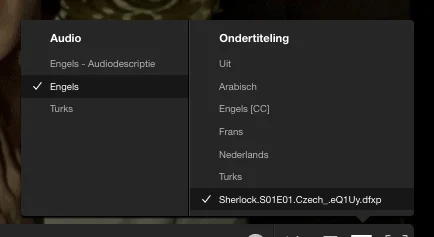
You will now see your uploaded subtitles appear among the already existing subtitles for this movie/show.

And that’s it! When there are mistakes in the synchronization of the subtitles you can alter it slightly in speed in the Super Netflix menu.
But what if you are just starting out?
Say your new year’s resolution is to learn Italian, but you have absolutely no idea where to start.
Besides applying strategies one and two, I would recommend trying to find a basic course, and before each Netflix session, study for at least 15 minutes.
Keep your notebook close at all times.

Go over the vocabulary, and see if you can recognize some of these words and phrases in the episodes or movies you are watching.
This is the easiest way of learning something and applying it immediately. Hearing something in context will make it a lot easier to remember in the future.
Don’t be afraid of pausing the show to write something down, whether it is a word or a phrase they are using on the show. Write down a word for word translation in your native language, so you get a better idea of the structure of Italian.
Turn it into a game or challenge, write down phrases with the words you’ve just learned, get a cookie every time you understand something new.
Find a way to make it work for you, and to celebrate your progress.
All in all…
I personally think using Netflix for language learning is one of the best and most successful strategies you can use, no matter what level you are currently at.
In fact, if you are already watching Netflix regularly, I think it would be a waste not to implement these strategies, as they are a painless way to improve your skills.
With a little bit of strategy, this could be your ticket to fluency!


